Abstract
OBJECTIVE--To compare the efficacy and tolerability of hydrochlorothiazide, sustained release verapamil, and their combination in patients with mild to moderate hypertension. DESIGN--Randomised multicentre trial of 48 weeks' duration with a double blind comparison of hydrochlorothiazide and verapamil followed by an open trial of combined treatment for patients not achieving the target diastolic blood pressure (less than 90 mm Hg) during treatment with a single drug. SETTING--Outpatient departments in 10 clinics and 10 private practices of general practitioners or internists. PATIENTS--369 Hypertensive patients with a diastolic blood pressure of 95-120 mm Hg during a placebo run in period of two weeks. INTERVENTIONS--Initial treatment consisted of 12.5 mg hydrochlorothiazide (n = 187) or 120 mg sustained release verapamil (n = 182) once daily (regimen I). If the target diastolic blood pressure of less than 90 mm Hg was not achieved within four weeks doses were increased to 25 mg hydrochlorothiazide or 240 mg verapamil once (regimen II) and twice daily (regimen III). Patients not achieving target blood pressure were given the combination of hydrochlorothiazide and verapamil--that is, 25 and 240 mg once (regimen IV) and twice daily (regimen V). MAIN OUTCOME MEASURE--Blood pressure determined with a device permitting automatic repeated measurements with printouts. RESULTS--After eight weeks of treatment with a single drug 76 out of 178 (43%) and 101 out of 175 (58%) patients achieved the target blood pressure with hydrochlorothiazide and verapamil, respectively. During follow up until 48 weeks patients treated with verapamil reached the target blood pressure more often and at lower doses and were less likely to switch to combination treatment than patients randomised to hydrochlorothiazide treatment. Adding verapamil to hydrochlorothiazide was more effective than the addition of hydrochlorothiazide to verapamil. At the end of the study 42 out of 169 (25%) and 73 out of 163 (45%) patients initially randomised to hydrochlorothiazide and verapamil, respectively, were at target blood pressure without combination treatment. After adding verapamil to hydrochlorothiazide or hydrochlorothiazide to verapamil an additional 58 (34%) and 29 (18%) patients reached the target blood pressure, respectively. Altogether 92 out of 332 (28%) patients failed to achieve target blood pressure with regimen V. There were four, 10, seven, and seven withdrawals due to possible adverse effects to treatment with hydrochlorothiazide, verapamil, combining verapamil with hydrochlorothiazide, and combining hydrochlorothiazide with verapamil, respectively. CONCLUSIONS--In doses currently used in antihypertensive treatment verapamil was more effective than hydrochlorothiazide as a single agent and in combination in mild to moderate hypertension, whereas withdrawal rates caused by side effects possibly related to treatment were similar.
Full text
PDF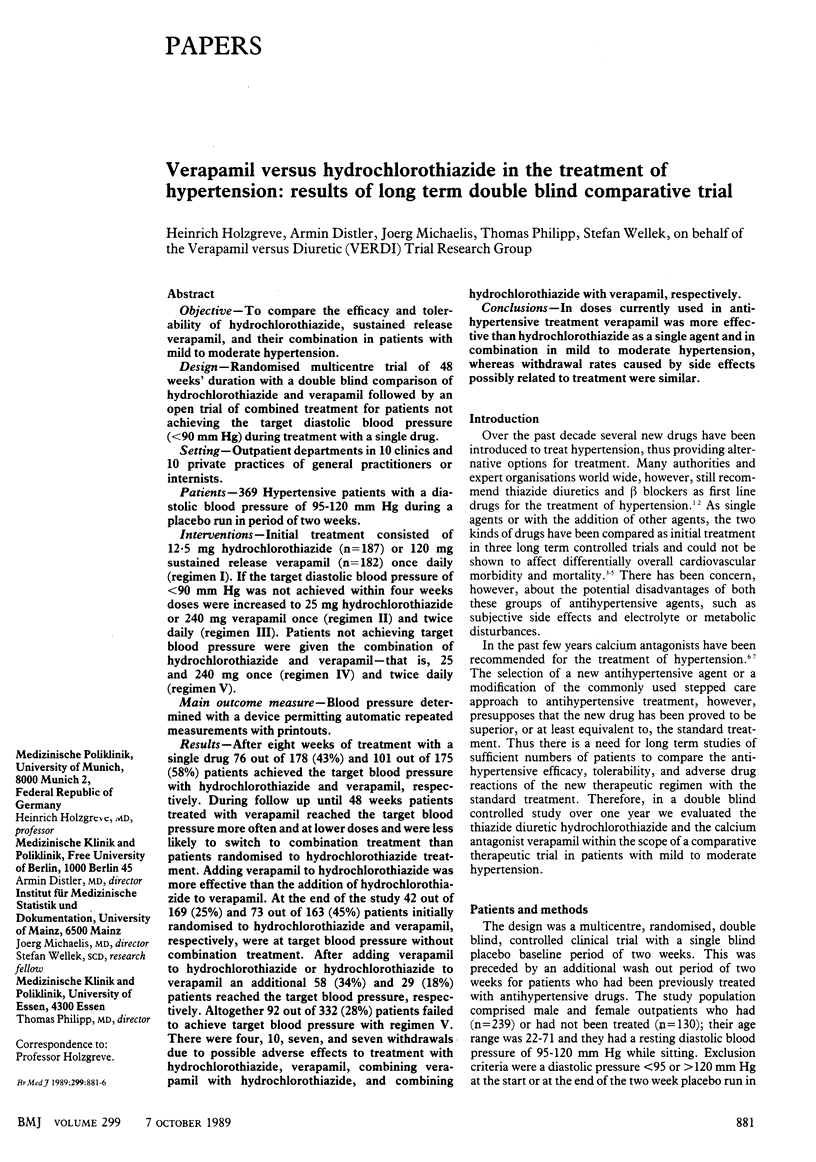
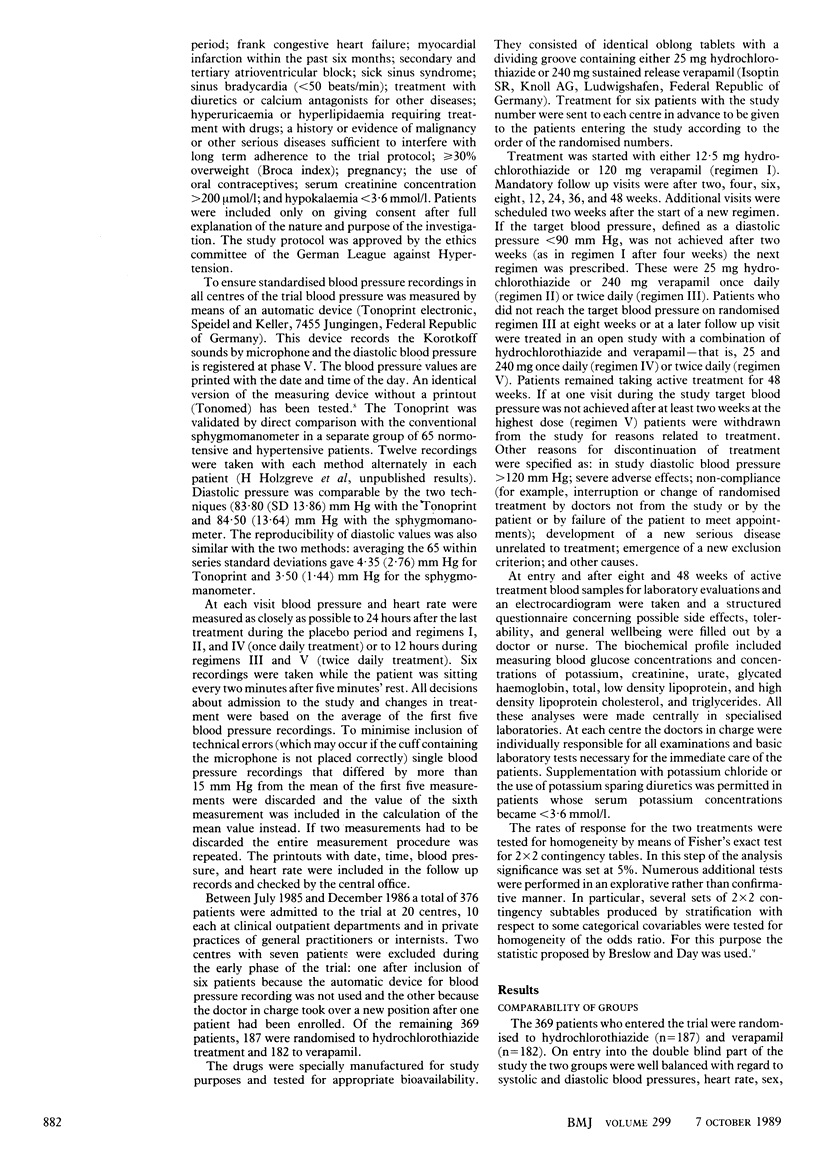
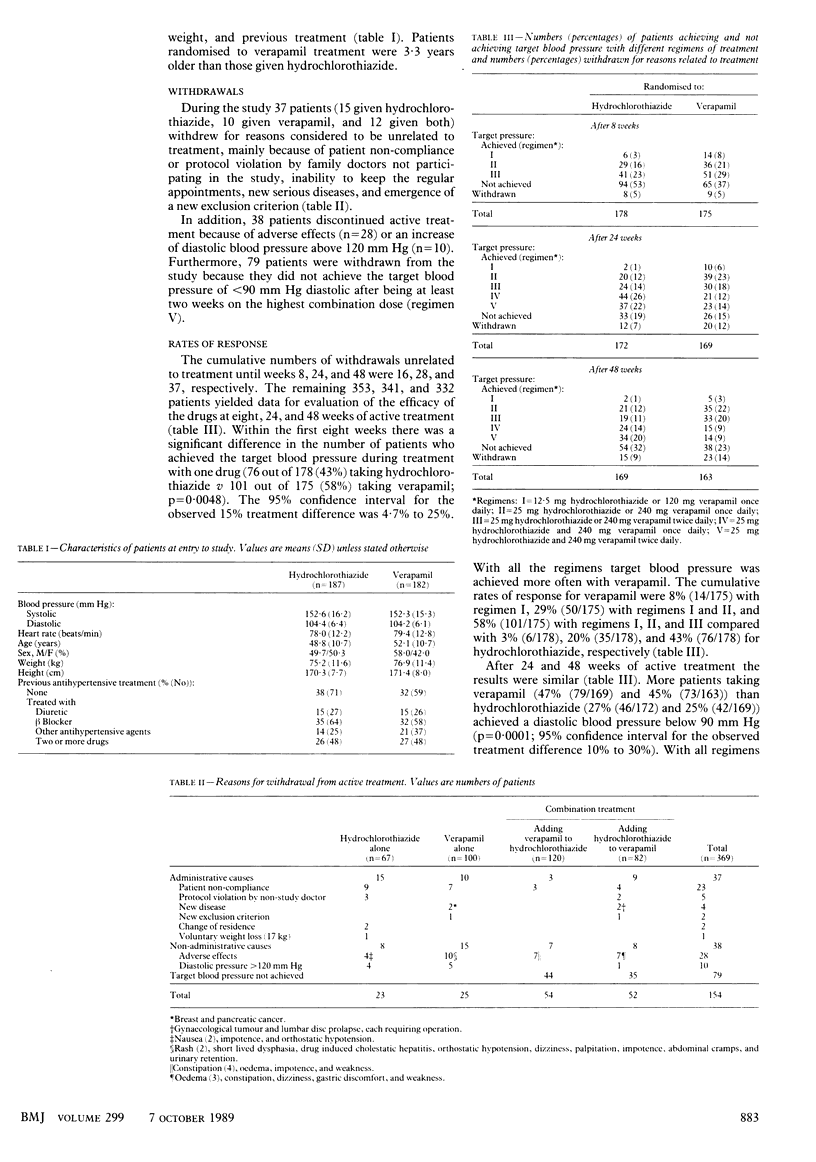
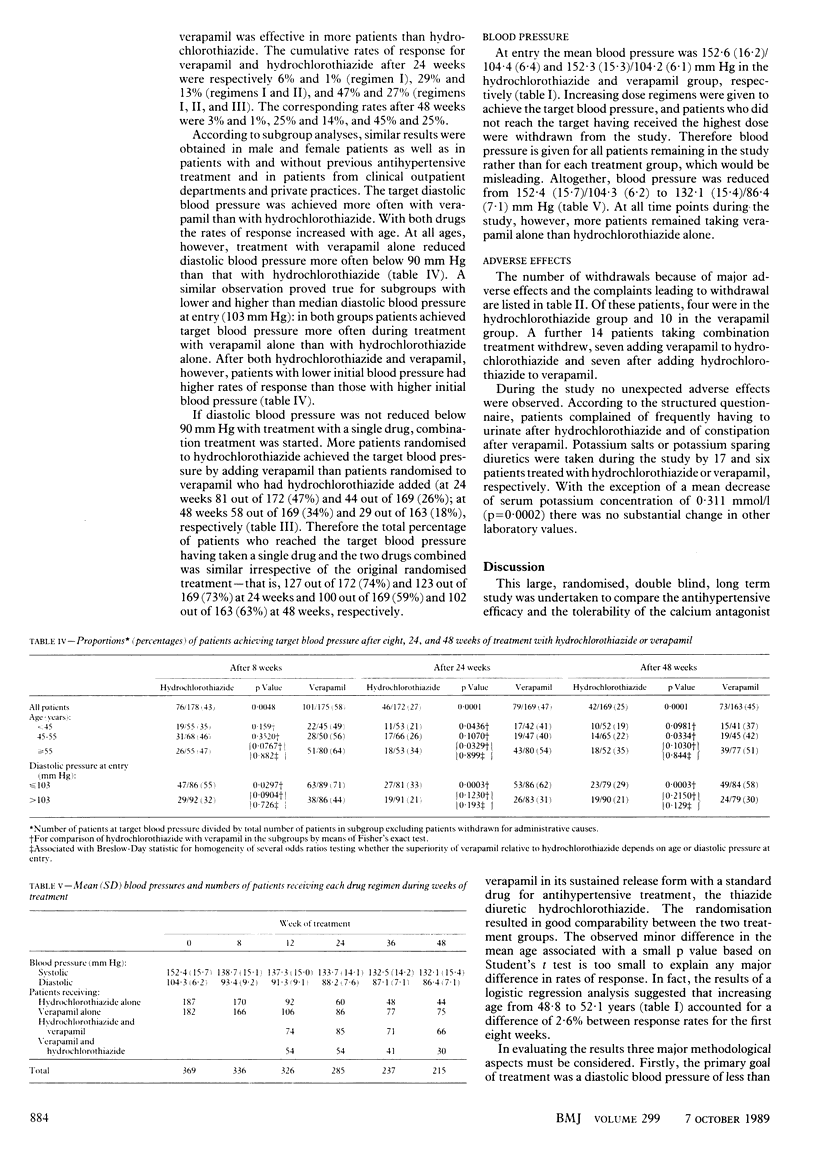
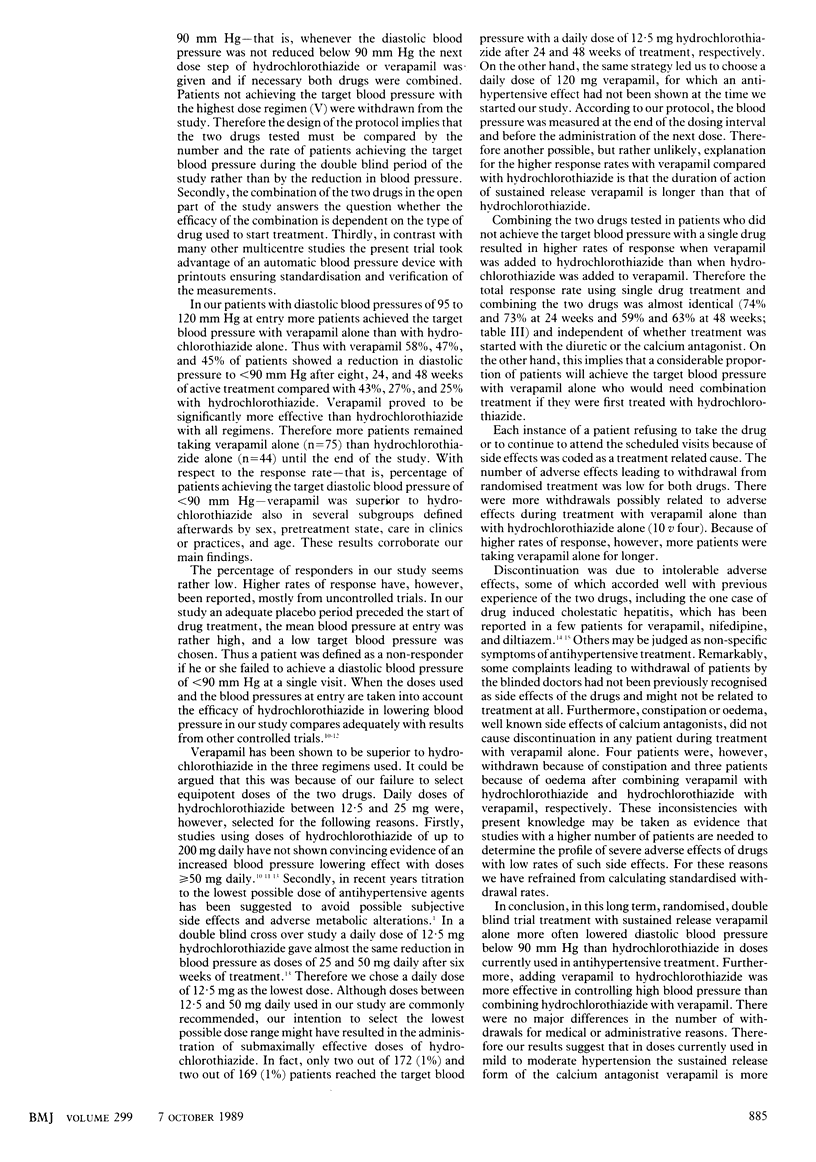
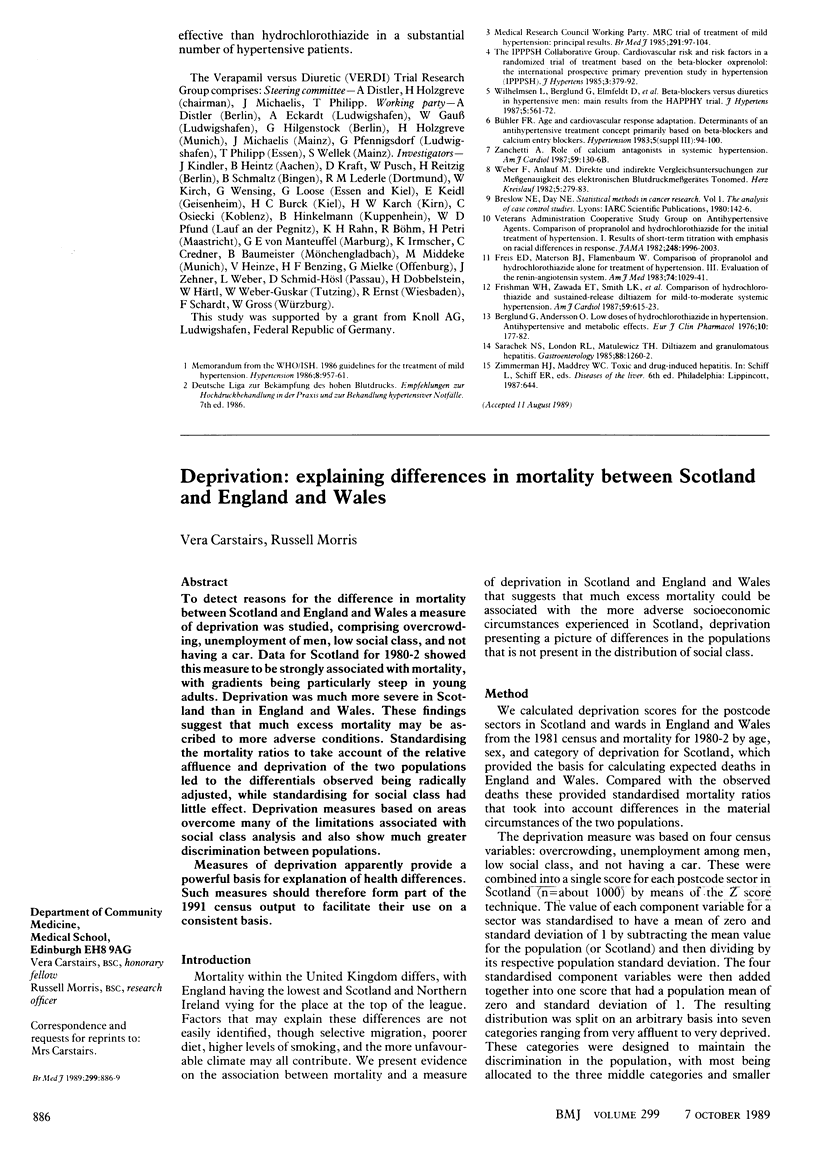
Selected References
These references are in PubMed. This may not be the complete list of references from this article.
- Freis E. D., Materson B. J., Flamenbaum V. Comparison of propranolol or hydrochlorothiazide alone for treatment of hypertension. III. Evaluation of the renin-angiotensin system. Am J Med. 1983 Jun;74(6):1029–1041. doi: 10.1016/0002-9343(83)90812-4. [DOI] [PubMed] [Google Scholar]
- Frishman W. H., Zawada E. T., Jr, Smith L. K., Sowers J., Swartz S. L., Kirkendall W., Lunn J., McCarron D., Moser M., Schnaper H. Comparison of hydrochlorothiazide and sustained-release diltiazem for mild-to-moderate systemic hypertension. Am J Cardiol. 1987 Mar 1;59(6):615–623. doi: 10.1016/0002-9149(87)91180-5. [DOI] [PubMed] [Google Scholar]
- Sarachek N. S., London R. L., Matulewicz T. J. Diltiazem and granulomatous hepatitis. Gastroenterology. 1985 May;88(5 Pt 1):1260–1262. doi: 10.1016/s0016-5085(85)80089-5. [DOI] [PubMed] [Google Scholar]
- Wilhelmsen L., Berglund G., Elmfeldt D., Fitzsimons T., Holzgreve H., Hosie J., Hörnkvist P. E., Pennert K., Tuomilehto J., Wedel H. Beta-blockers versus diuretics in hypertensive men: main results from the HAPPHY trial. J Hypertens. 1987 Oct;5(5):561–572. doi: 10.1097/00004872-198710000-00009. [DOI] [PubMed] [Google Scholar]


